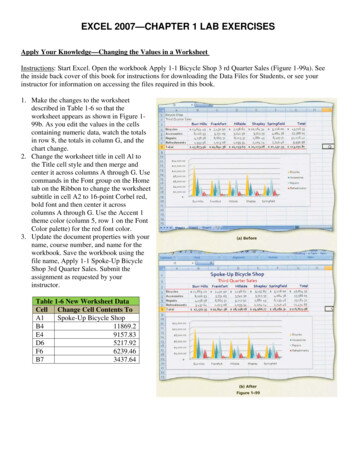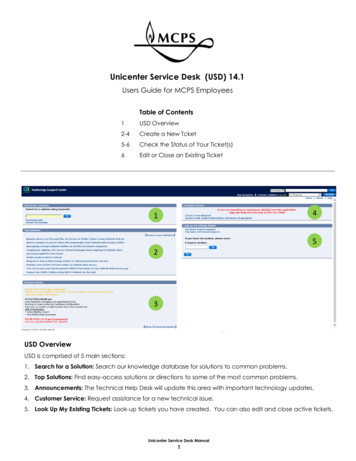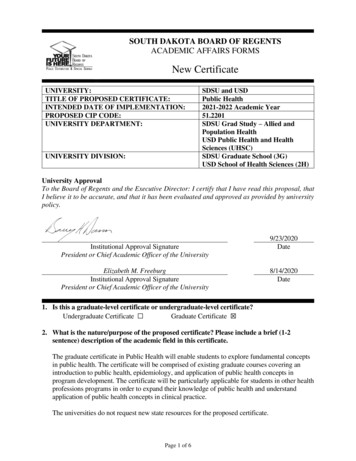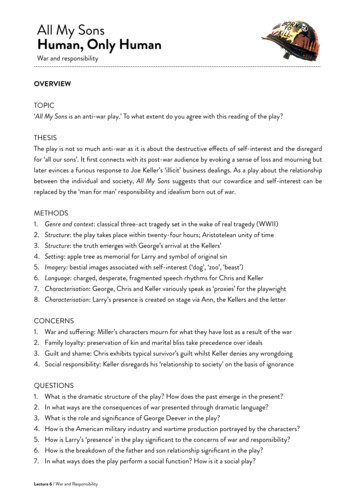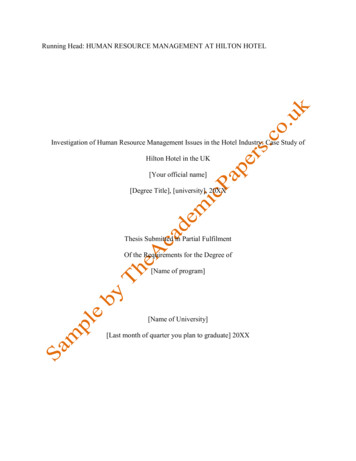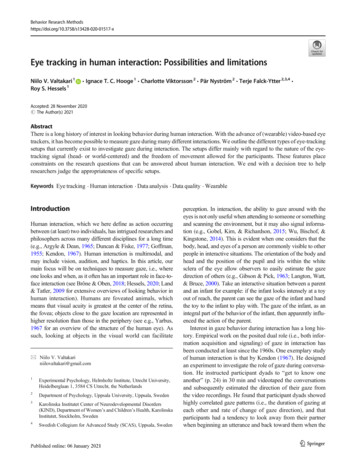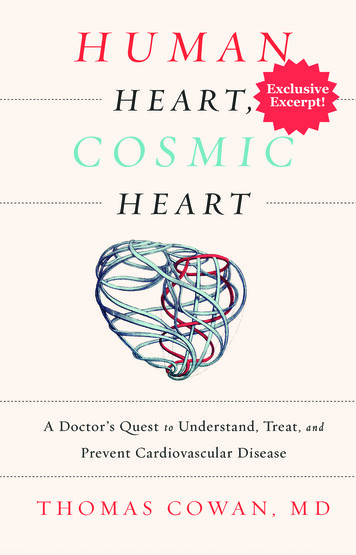
Transcription
HUMANH E A R T,ExclusiveExcerpt!COSMICHEARTA Doctor ’s Quest t o Understand, Treat, a n dPrevent Cardiovascular DiseaseT HOMAS C OWA N, M D
YOUR EXCLUSIVE EXCERPTFOR MORE VISIT:HumanHeartCosmicHeart.comHUMANH E A R T,COSMICHEARTWe’d like to invite you to two exciting events that both start today:In the fall edition of The Heart Revolution online event, youcan access 20 hours of expert talks about our hearts for free forthe next five days. CLICK HERE for your access link.In the upcoming documentary Dawn of Hearts, Dr. Cowan willshare his insights from 35 years of research on the function andmalfunction of the heart. This is the first documentary that willdeliver evidence that your heart is not a pump and should not betreated as such. Dr. Cowan will discuss and expand upon topics heexplained in his book and deliver additional mind-bending factsabout the actual function of your heart.You can pre-order this documentary and participate in the production process during the filmmaker’s Kickstarter Campaign.Supporters of this campaign will also get many special rewards.We believe this is must-have knowledge for every person who hasa heart, especially for professionals who want to take care of otherpeople’s hearts. With your engagement, both the online event anddocumentary can reach many people and ignite a new era of heartcare.
CHAPTER TWOCirculationIn 1628, an English physician named William Harvey published what would become a seminal work in the field ofcardiology, a book titled Exercitatio Anatomica de MotuCordis et Sanguinis in Animalibus (Anatomical Studies on theMotion of the Heart and Blood in Animals), often referred tosimply as De Motu Cordis. At the time it was published—at thecrux of Europe’s scientific revolution—De Motu Cordis was metwith both praise and opposition. Today, Harvey is consideredone of the most important scientists and physicians of all timefor his study of circulation, his description of the heart as apump, his empirical methodology—and for dealing a deathblowto the theory of vitalism.Until Harvey published De Motu Cordis, it was the Greekphysician Galen’s view of circulation that prevailed. Galen’s theory was that the liver was the origin of venous blood and thatblood and spirits flowed from the heart in the arterial system.Dr. Harvey, who served as physician to King James I, King––– 7 –––
H U M A N H E A R T, C O S M I C H E A R TCharles I, and Sir Francis Bacon and would later in his careerdefend women against allegations of witchcraft, rejected the ideaof a vital force as the engine for the movement of blood aroundthe body. Today, most scientists continue to reject any suggestionof an unseen force playing a role in how things work. Harvey’sdescription of the heart as a pump remains one of the mostimportant foundations of modern medicine and physiology. I was already disillusioned with the modern worldview—thedominant paradigm, industrial capitalism, whatever you want tocall it—when I first encountered Rudolf Steiner’s idea that thethree most important “things” for the further evolution ofhumanity are: (1) that people stop working for money, (2) thatpeople realize there is no difference between sensory and motornerves, and (3) that the heart is not a pump.Because I was already skeptical of so much, encounteringthese ideas—and, by extension, Steiner’s worldview—wasn’t thegut-wrenching struggle for me that it is for some people. I wassurprised but not incredulous to encounter Steiner’s way ofthinking and viewing the world. More than anything, it felt likecoming home. Like something I knew all along but had neverseen articulated.The idea of Steiner’s that interested me the most was that theheart is not a pump. It was an idea that would continue tointrigue me for decades and drove me to question everything I’dlearned about the heart and circulation. By circulation, I meanthe movement of blood in the blood vessels, of which there arebasically three types: arteries, veins, and capillaries. When bloodexits the heart, it travels through the large aortic arch into themajor arteries and then into the small arterioles until it meetsthe “midpoint,” that is, the capillaries.Capillaries are the one-layer thick transition vessels wherenutrients and gases are exchanged between the blood and the––– 8 –––
CIRCUlATIONcells. The capillary system is massive; if it were spread out, itwould cover at least one entire football field.1 After the bloodexits the capillaries, it enters the smallest venules in its trip backto the heart. From the small venules, it goes to the progressivelylarger veins and then finally into the largest veins like the inferiorand superior vena cava that bring all of the blood back from thebody to the heart and lungs. The purpose of this circulation is tobring oxygenated, nutrient-rich blood to the cells where it isneeded and then bring the oxygen-poor, nutrient-poor bloodback to the heart and lungs so that it can be replenished.There are profound mysteries in even this simple descriptionof circulation. Although they aren’t etymologically connected,the words arteries (ars, or Mars) and veins (Venus) suggest acosmic or not-of-the-earth connection. And the heart—whichpeople have, for millennia, associated with the sun—liesbetween these archetypal male and female principles. Each halfof the circulation has an archetypal disease pattern: The arteriesare the location where hypertension, a predominantly male disease, plays out. The veins are prone to varicose veins, apredominantly female disease.If you examine the relative velocity of the blood at variousstages of the circulation, you’ll see that the blood moves thefastest in the large arteries and veins, where it is forced intocomparatively fewer channels, and the blood moves the slowestin the capillaries, because there are so many of them. This issimilar to how water moves in a river. It is fastest when the riveris narrow, slower when it flows out into tributaries, and slowestwhen it flows out into a wetland area.What’s amazing is that blood actually stops moving in thecapillaries, which is necessary for the efficient exchange of gases,nutrients, and waste products. After the blood stops moving, itoscillates slightly, and then begins to flow again as it enters theveins. But if the blood stops moving at the midpoint of its circular flow through blood vessels, only then to start moving again,what is the force that drives this movement of the blood from its––– 9 –––
H U M A N H E A R T, C O S M I C H E A R Tmotionless state before it leaves the capillaries and begins itsjourney back to the heart? Is it possible that this force is the“pumping” of the heart? Wouldn’t there have to be some pumplocated in the capillaries propelling the blood forward andupward? Is there some “vital” force located in the capillaries thatdoes this pumping? These are the questions we must grapplewith if we’re going to understand how the blood circulates in thebody. But one thing is clear: If the blood has stopped movinginside the capillaries, then the force cannot come from the heart.It must arise in the capillaries.In order to understand that precise moment in the capillaries when the blood begins to move again, it’s worth examiningthe nature of water, which offers critical insight into an understanding of how and why the blood moves. We are taught inscience class that matter exists in three states: solid, liquid, andgas. Every substance, depending on the conditions, exists in oneof these states, and these are all the possible states that exist. Ifyou think of water, however, you realize that it exhibits properties that seem to defy this three-state model—a model thatprovides one of the bedrock principles of modern science. Welearn that as a substance moves from gas to liquid to solid, themolecules get closer together and the substance becomes denser.As a result, the volume of a given liquid substance is heavierthan an equivalent volume of the same substance in its gaseousstate, and the solid is denser and heavier still than the liquid. Forexample, liquid mercury is heavier than gaseous mercury, andsolid mercury sinks in liquid mercury because it is denser andheavier. But this is not the case for water. Only with water doesthe solid phase (ice) float on the liquid phase (water). If solidwater were heavier than liquid water, aquatic life as we know itcould not exist.We have all witnessed surface tension, which is the surprisingand unusual tendency of the top layer of a body of water to beextremely “thick” or “strong.” Most scientific explanations saythat this is because the interface between the air and the water––– 10 –––
CIRCUlATIONproduces a force that changes the molecular configuration of thetopmost three or four molecular layers of water so that itbecomes “more dense.” But can we really water-ski or skip heavyrocks across a three- or four-molecular thick “layer” of water?That’s the thickness of the closest together you can hold yourthumb and index finger divided by a million. And even if it istrue, what is meant by the changed molecular configuration ofthis dense water? Is it water or not? If it’s a different molecularconfiguration than water, what do we call it?Dr. Gerald Pollack is a researcher and professor of bioengineering at the University of Washington who has been investigatingthe anomalous behaviors of water and the so-called fourth phasefor many years. Viktor Schauberger was an Austrian forester,inventor, and intellectual who died in 1958. If you study thework of Pollack and Schauberger together, it offers some startling insights into the behavior of water.Pollack has found that water exists in not three but four“phases.” The fourth phase is an intermediary between liquid, orbulk, water and the solid phase of ice. There have been manynames given to this fourth phase. Pollack calls it the exclusionzone or exclusion layer, but other names include the colloidalphase, gel phase, or structured water. I refer to it as structuredwater because for me the most important aspect of this anomalous phase is that it is more structured than bulk water.Pollack describes in his book, The Fourth Phase of Water,how structured water forms. Any time you have a hydrophilicsurface such as gelatin or nafion (a plastic) and you put it inwater, a zone of structured water will form. The thicknessdepends on the charge on the surface of the hydrophilic substance and some other factors, which I will explain in greaterdetail in chapter 7.This ability of a hydrophilic substance to convert bulk waterinto structured water explains why, when you put stronglyhydrophilic proteins like gelatin in water under the proper conditions, you create a solid “gel” of structured water. This is how––– 11 –––
H U M A N H E A R T, C O S M I C H E A R TExclusion Zone (EZ)EZwaterbulkwaterhydrophilic (water-loving) materialAny time you put a hydrophilic surface—such as gelatin or nafion (aplastic)—in water, a zone of structured water will form. This zone issometimes referred to as the exclusion zone (EZ) because it excludes toxins, solutes, and other substances. Reproduced with permission fromGerald H. Pollack, The Fourth Phase of Water (Washington, DC:Ebner and Sons Publishers, 2013), xxii.you make Jello, which can give us some insight into some of theproperties of this fourth phase. This fourth phase of water formsbest at certain temperatures (around 4 C),2 and it highly structures the bulk water, which is why Jello doesn’t leak (unless youheat it and convert it back to water) even though it’s more than96 percent water by volume.This ability of highly hydrophilic substances, especially proteins, to structure water is central to biological life. The majorityof the water in biological systems, including in cells, is in the formof structured water. This is why our cells, like Jello, don’t leakeven though our cells are about 70 percent water. The cytoplasmin our cells is in a gel-like state because of the network of hydrophilic proteins that make up the interior framework of the cell.––– 12 –––
CIRCUlATIONEZ waterbulk waterAs water becomes structured, the electrical charges separate. The structured water becomes negatively charged while the bulk water is positivelycharged. Reprinted by permission from Pollack, 82.There are many interesting properties of the structured waterthat forms right next to these hydrophilic surfaces. These includehaving an increased viscosity compared to bulk water. The structured water layer is also negatively charged as a result of havingan abundance of free electrons. The presence of these free electrons is an intrinsic part of the structuring process of water. Asthe water becomes structured, it also becomes negativelycharged. This can be shown by placing a voltage meter in thestructured zone and comparing the measurement to a voltagemeter placed in the bulk water zone.3Another property of structured water is that the pH of thestructured water zone is different from that of the bulk water,which can also be confirmed by careful pH measurements.4There are also other physical differences between structuredwater and bulk water. The molecular configuration of the––– 13 –––
H U M A N H E A R T, C O S M I C H E A R TNafion tube filled with water(a)EZprotons(b)freshwaterNafion tubeprotonatedwaterA hydrophilic tube with a layer of structured water lining the inside of thetube. Reprinted by permission from Pollack, 75.structured water zone is more dense than that of bulk water.Most important, however, is that, simply as a result of a hydrophilic surface being placed in bulk water, with essentially nooutside inputs, a layer of structured water forms next to thehydrophilic surface that has a different chemical (pH), electrical(voltage), and molecular configuration (density) than bulkwater. This is a dramatic revelation in and of itself.The next step—and the one crucial to understanding circulation—is that if you take the hydrophilic surface and roll it upinto a tube,
—BEN GREENFIELD, author of the New York Times bestseller, Beyond Training; founder and owner, Greenfield Fitness Systems “What happens when the medical profession views the heart as a mechanical pump? We get ghoulish surgeries, medications with horrible side effects, and soulless low-fat diets. Tom Cowan asks us to look anew at the heart; first step is the demonstration that the blood .

